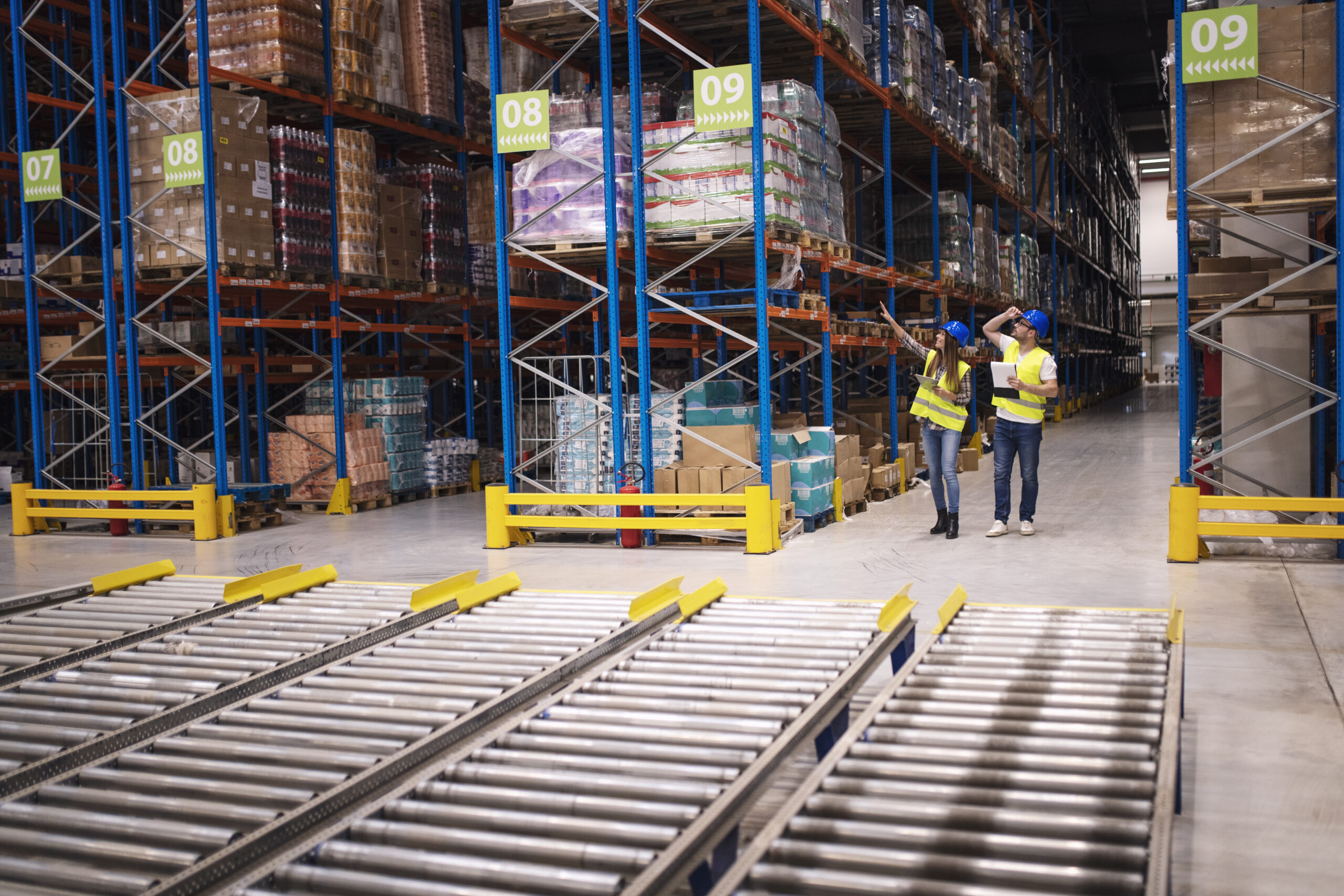Logistics is part of the supply chain of a product from the raw material to the customer. These supply chains are not always established at close distances, you may need to procure the raw material through trade elements or you may need to do the warehousing processes over long distances. In all this supply chain flow, logistics transport modes carry great costs in the process. Today, many companies are experiencing negative effects because they cannot meet their logistics expenses. For this reason, the least cost, safe and preferred elements are sought from the point of departure to the destination of the products.
Sea, road, air, river, Ro-La, rail or other logistics transportation modes can be preferred. When choosing them, the type, weight and substance of the product are very important. A product can be transported by more than one logistic transport mode or logistic transport type. These vary in the way they are transported according to their documents. It can be Multimodal Transport, Intermodal Transport, Combined Transport and Integrated Transport. Germany, Poland, Italy, Hungary, Romania, the Netherlands and many countries are effectively implementing logistics transport types. Germany also sets an example with its logistics transportation modes and logistics transportation types service by river.
What is Logistics?
Logistics is first and foremost part of the supply chain. In addition, as we mentioned above, logistics refers to the whole flow from the first supplier to the manufacturer and from there to the customer, such as transport modes, storage, customs clearance, packaging, information flow, distribution and order. In short, if we express logistics with seven lines, it is to ensure the satisfaction and transportation of the person who orders the right product, to the right person, at the right time, to the right place, in the right quantity, at the right quality and at the right price, by using logistics transportation modes.
In this article, we will deal with the logistics transportation modes and logistics transportation types; we will explain not only a single mode but also many mixed, complicated and different types of logistics transportation of products transported by sea, air, rail and road. For example, we will explain the different logistics transportation modes and types of logistics transportation, as well as the logistics transportation modes according to the needs of the customers and the type of product, not only by road from Germany to Poland. Logistics is not just a concept used for foreign trade. Although we talk about different logistics transportation modes, in fact, logistics is an indispensable element of our life.
Unimodal Transport (Single Mode Transport)
With Unimodal transportation, the goods are transported to the person placing the order using a single mode. For example; Only one way to a person who orders a product from Germany to Poland; by road, sea, air or rail. Of course, there are advantages and disadvantages to logistics transport modes when using these routes. For example; When the shipment is made by air, this process can be completed within hours from Germany to Poland, but the airline is not always preferred due to cost obligations. Highway may vary according to the product during the shipping process from Germany to Poland, but if the product does not require very special transportation modes, the highway is both affordable in terms of time and low in price.
Railway transportation can also be among the preferences, especially among the European Union countries, since railway transportation is successfully implemented, it provides less cost than road transportation when preferred. Of course, when unimodal transportation is carried out, choosing the highway for short distances gives more effective results and the road is the most preferred among the logistics transportation modes. Again, logistics transportation modes and logistics transportation types should be determined according to product characteristics.
Highway transports
Road Transport, which is used for domestic and interstate transportation, is of great importance in trade. With the choice of logistics transportation modes or logistics transportation types, the cargo can be shipped directly to the destination. It is faster than other logistics transport modes, excluding air. When it is analyzed as an opportunity cost, it can take the first place according to the speed and the transportation cost of the load. In addition, official processes in road transport proceed faster and less costly than other logistics transport modes. Road transport can be preferred in many parts of the world, as infrastructure costs are less than sea and air routes. Compared to other types, it offers door-to-door service with trucks, lorries and similar vehicles.
Maritime transport
Maritime transport, one of the logistics transport types, is the safest and less costly logistics type among the international transport modes. You can transport products of all sizes and weights by sea with special applications. In terms of energy consumption, the sea route is still the best option. Therefore, it is the one with the least cost and the largest transportation capacity among the logistics transportation modes and logistics transportation types. Since there are no variable costs, senders or their recipients are comfortable. It is also divided into two transports; as tramp transportation and liner transportation. When mining products and similar dry cargoes are transported by ships, they are transported by tramp transportation. Ro-Ro transportation with containers or ships is called liner transportation because it works on a scheduled basis.
Airways transporting
The speed factor is the most important element of air transportation, which is one of the logistics transportation types. Air cargo types are divided into general cargoes and special cargoes. In general loads, private documents or products of individuals or institutions, goods that do not require storage, dangerous goods, food or live animals, as well as all dry, clean cargoes such as these can be transported. Special cargoes, on the other hand, are types of cargo that require special handling or storage during shipment.
The reason why air is not preferred for private or general loads is that it is fast when compared to other logistics transportation modes. It offers harmless transportation for sensitive and special loads. For example, a special cargo that you want to send from Germany to China will reach your desired destination safely in a short time.
Rail Freight
By rail, you can transport low-value, large-volume and non-urgent products to any place where there is a railroad. Railway transportation, which is one of the logistics transportation types, does not have high costs. It only has costs such as the initial investment, railway construction. Generally, the state plays an active role in railway transportation compared to the private sector. Italy is one of the countries with the highest success in developing electrified railways and rail transport infrastructures. The country with the largest market share is Poland. It has a great importance in shipping operations in logistics transport modes of developed countries. In addition, railway projects are made in a way that complements highway projects. Countries such as Iraq, Syria, Azerbaijan and Russia trade using pipelines.
Block Train Transportation, on the other hand, is the transportation of the train from the station where it is loaded to the destination, without changing the locomotive and wagons, and without the need for handling, one of the logistics transportation types, on the same line with the sea.
Pipeline Transportation
Pipeline transport (pipeline) transports liquid or gaseous substances through pipes. With the help of the pressure of liquids such as crude and refined oil, gasoline, diesel, natural gas and biofuels, alcohol, ammonia, ethanol, logistics can be provided for short or long distances with pipes. Oil can also be transported by maritime tanker transportation with less cost than these products. However, pipeline is preferred for natural gas. The public sector and its agreements are more important than the private sector, where investment costs are high. Pipelines are reliable and high volume products can be exported. Pipelines, which are one of the logistics transportation types and logistics transportation modes, can also be used for water transportation activities.
In addition, the Blue Stream Pipeline provides direct gas shipments from Russia to Turkey under the Black Sea. In this way, Turkey provides energy imports with different pipelines.
Inland Waterway (River) Transportation
River transport is carried out by low-tonnage boats called Feeders or light ships. The transported cargoes are transferred from the logistics modes of transport to the ports by rail or road, and it is done in a form of intermodal transportation on rivers. Its advantages are low energy requirement.
. Large quantities of goods can be easily shipped by inland waterway or river. It does not cause noise pollution, does not harm the environment. It contributes to sustainability by reducing the use of CO2 emission gas. Its cost per unit is low, it has a low material level in transportation. Infrastructure and private vehicles are less than half of the railway and less than a quarter of the road.
Romania, Serbia, Croatia, Hungary, Bulgaria, Poland, Czech Republic, Slovakia, Austria and Germany are the most important areas for European river transport because the Rhine and Danube rivers contribute to these countries with freight transport.
Multimodal Transport
Multimodal Transportation, that is, multimodal transportation, is the use of more than one – type of logistics transportation, provided that the goods are transferred from the logistics transportation modes. In terms of facilitating import and export transportation processes, it is one of the logistics transportation types used especially for bulk cargoes and is a logistics transportation mode. With Multimodal, loads are traveling no matter how many different modes they change with a single contract. A single carrier company prepares more than one mode with a single contract. For example, if the main transportation is to be made by sea to Germany, a Combined Transport Bill of Lading (Combined Transport B/L) or Multimodal Bill of Lading (Multimodal B/L) contract is prepared by the company and the logistics transport modes and logistic transport types along the way can be safely specified with a single contract.
Combined Transport
In combined transportation, it means to ensure that the goods are transported by road, rail, sea and air with at least two modes from the point of departure to the destination of destination. In combined transport, for example, when transporting a cargo from Germany to Poland, we can transport large volumes of cargo economically. Even if we use at least two modes, we can transport the cargo as a whole, easily optimizing our mode of transport. We can make the cheapest, safest and fastest delivery between Germany and Poland. We can provide loading and door-to-door distribution opportunities by road, not only in these countries, but also on other roads. It is also profitable in that it can consolidate and combine different loads. The advantage of cost differences can be used in heavy loads (breakbulk) vehicles.
Intermodal Transportation
With its environmentalist approach, intermodal transportation has spread rapidly in European countries such as Poland, France, Germany, Italy and also England. Due to geographical differences, the investments of the countries are different. Therefore, regions specializing in logistics transportation modes and logistics transportation types have emerged in different countries. Thanks to these regions, combined and mixed transportation logistics transportation types have developed. For example; RO-RO (Roll On Roll Of) ships and RO-LA (Rollende Landstrasse) railway transportation is possible with intermodal transportation. In this transportation model, land, rail and sea routes are used at the same time and different contracts are made for each of them.
In intermodal transportation, more than one contract is made for each of the different logistics transportation modes and logistics transportation types used between loading and arrival stops.
What is intermodal transport?
Intermodal transportation, that is, intermodal transportation, is the mode change of containers using more than one contract with the same transport container and transport vehicle. There is no handling in intermodal transportation, which is one of the logistics transportation modes and logistics transportation types. The use of road after railway, railway after air or sea route, and road use after road are examples of intermodal. The obligations in these transactions are all set by different transport documents. It can be the agent organizing the transport, or the Freight Forwarder or the owner. If the Freight Forwarder or the carrier is solely responsible for its own shipment, it is also referred to as “Segmented Transport”. It is one of the popular logistics transportation modes or logistics transportation types, it is also used by Germany and Poland.
What is mixed transport?
It can be called mixed transportation, that is, combined transportation or fourth party logistics. Mixed transport is one of the types of logistics transport that can provide door-to-door transport for intercontinental or long distances, sometimes according to the desired delivery, with a single contract. These logistic transport modes and logistic transport types have been presented to other states with the United Nations Geneva Convention on mixed transport. Since mixed transport is suitable for all modes of transport, there is a special contract and bill of lading for mixed transport. In addition to the transportation of the goods with a single document, it also covers the processes of storage, packing and mode change. It is made in European countries such as Germany, Poland, France. A single contract is not preferred because it increases the responsibility of individuals.
What is chain transport?
Chain transport is a logistic mode of transport that allows more than one vehicle to be transported by air, rail and sea with a single contract. Since this type of transportation is a single contract, the manager of the process is also unique, but since there are more than one transportation mode in the process, precautions should be taken against setbacks and possible situations while planning the process management and the process should be optimized. In Europe, Germany, the Netherlands, Poland, Italy, France use these types of transportation. The reason for the use of air, sea or river routes all over the world is with a single contract, because the advantage of single contract is used so that the process can be better managed in terms of costs and large volumes can be transported at less cost.
What are the factors that determine the cost of transportation?
Transportation and logistics activities put many people in the trade into trouble. There are companies that drag their company into financial problems because they cannot meet the logistics costs. In order to manage these financial problems, it is very important to make the right logistics planning.
Factors to be considered while making plans; distance, volume, product density (for liquid products), stackability, storage, handling, damage liability, packaging, frequency of shipping the product, logistics transportation modes or logistics transportation types selected within the product, steps taken for service quality, and similar logistics increases the costs of the processes. In addition, customs clearance, intermediary company payments, if used, domestic and international road permit documents also increase the costs of transportation activities. In order to deliver your product to your customer with the least cost, it is useful to choose the logistics transportation type that suits you.
Factors that determine the choice of transport type?
When choosing logistics transportation modes in transportation, an evaluation is made by considering fixed costs and variable costs. Logistics operations can be optimized according to the distance, or with some applications, the opportunity cost of the goods can be evaluated according to the speed, cost and security maintenance. Again, if we want to reduce logistics costs, freight, loading, unloading, handling and storage, insurance costs of logistics transportation types and logistics transportation modes should be considered


